#scrpg
Explore tagged Tumblr posts
Text
Lucy Weaver: Magical Woman Master Post
Lucy Weaver: Our titular heroine, once the magical girl Butterscotch, Lucy is now the jaded, burnt-out magical woman Shirley Temple. Disillusioned with the life of a magical girl, and with the intentions of Astral, she now works to train the next generation of magical girls and to make sure the tragedy that destroyed her own team, Sweet Victory, never happens to anyone else again. Lucy is a relatively short woman, with pink dyed hair styled in an undercut. She tends to wear sturdy practical clothes, most commonly denim and work boots. When she transformes into Shirley Temple, she grows over half a foot taller, gaining a pinkish tint to her skin and her eyes and hair both turn a bright red to match the color of the magical girl outfit she appears in and the goggles she wears over her face. She wields a large, heavy wand like a bat. Even in her transformed state, she keeps her trusty denim jacket, whose pockets she always keep filled with butterscotch candies.
A.S.T.R.A.L: The Arcane Superhuman Transforming Rescue and Aid Leage is a semi-secret, pseudo-governmental program that studies alien tech and magical artifacts to create heroes to defend the earth. Their most promising program, the Inducer Program, uses a combinaton of alien chemicals and technology mixed with magical herbs to create a drink that engenders a temporary physical transformation along with the imbuement of strange powers in the drinker. ASTRAL claims the Inducer works best when subjects are exposed at a young age, around puberty, and has continued exposure throughout the next few years. Most of ASTRAL’s heroes are members of the Inducer program, although a few developed powers on their own and were snatched up by ASTRAL, or came to them for training, shelter, and resources. Despite the good ASTRAL has done, their methods are often controversial, or at least would be if they were widely known, and the organization is secretive enough even within it’s own ranks that some feel they may be engaged in shadier practices than even what is known. ASTRAL does it’s best to stay in the shadows, letting their magical girls take the limelight and act as the face of the program.
Annabelle Cooper: Annabelle is a mid-level administrator in ASTRAL, and in charge of several of the older magical girls, including Shirley Temple. Annabelle has a habit of giving the women under her charge code names chosen from alcoholic beverages. Most believe the names stem from her own mild alcoholism and a lack of creativity. Annabelle is a true believer in ASTRAL’s mission, and has little time or patience for those she deems to be disloyal or disrespectful to the organization, a fact that causes her to frequently butt heads with Shirley Temple. Annabelle is tall and slender, with pale skin and silverly blonde hair. She dresses in crisp pant suits, usually in a light blue color, and wears thin rectangular glasses.
Aurora Adams: Also known as Tequila Sunrise, Aurora was a magical girl around the same time as Lucy. Back then, she was known as Borealis and was part of a team known as the Celestial Harmonies. While Annabelle frequently grates on her nerves, Aurora is very loyal to ASTRAL and therefor is rarely willing to let her frustrations with Annabelle and her leadership choices show. Currently, Aurora is not training any new heroes and mostly acts as an Auxillary hero for emergencies, and as a tactical advisor to Annabelle in case of superheroic conflicts. She is very curvy and prefers flowing, loose clothing, often dresses or else a blouse and skirt. When she transforms into Tequila Sunrise, she loses some of her curves, replacing them with impressive musculature. Her hair becomes a vibrant blue and her outfits are replaced with purple and blue outfit with lots of flowing, multi-colored ribbons. She wields a silver and blue magic wand that primarily is used for firing energy blasts, although Tequila herself would rather get into the thick of the fight herself.
Jenny McGuinness: Also known as Lemon Drop or Lemon Drop Martini, Jenny is a trainer with ASTRAL, and an ex-member of the Celestial Harmonies known as Starbeam. Jenny is genderfluid and uses She/They pronouns. Jenny currently doesn’t have any trainees, but is expected to take on a crew of young girls soon. She has acted as a substitute trainer to the Shooting Stars when Lucy was injured or on Annabelle’s bad side enough to be benched from training the girls. As Jenny,they dresses in a butch style, usually a tank top, stained with engine grease, and a leather jacket paired with either cut off jean short shorts or leather pants. They have short cropped red hair, a smattering of freckles across her face, and sapphire blue eyes. As Lemon Drop, her hair grows out into tight red curls, she shrinks a few inches and becomes a little more slender and lithe. She wields a golden staff and her outfit becomes a yellow and blue, much more feminine outfit, more of a traditional magical girl look.
Yuna Yoshimura: Also known as Strawberry Daquiri, Yuna is an ex-member of the Celestial Harmonies who used to go by Nebulae. She is a trainer for ASTRAL and has yet to be introduced in game.
Absinthe: An Ex-Member of ASTRAL and a current Vigilante. Absinthe has a beef with Annabelle specifically. She has not yet been introduced in game.
Tanya Taylors: Going by the code name Arcana, Tanya Taylors is in many ways the leader of the upcoming Magical Girl team the Shooting Stars. The eldest of the group, Tanya feels the responsibility to lead and protect her teammates. She believes in the mission of ASTRAL and loves being a magical girl. However, she does harbor some hidden reservations about the organization and their intentions, reservations that have only been heightened by her tutelage under Lucy Weaver. Tanya is a 16 year old African-American girl. She normally keeps her hair braided in tight cornrows. She usually wears casual clothes, most frequently a t-shirt and shorts, in some combination of pinks and greens. When she becomes Arcana, Tanya appears to be in her late teens or early 20’s and wears a purple and gold robe reminiscent of a robe. She wears a slender golden tiara and wields a long magical staff of purple and pink metal. Her Hairstyle as Arcana changes to an afro.
Olivia Grant: Also known as Moonstone, Olivia is the muscle of the Shooting Stars. Bubbly, optimistic, and cheerful, Olivia is mostly happy to go along with her friends. She enjoys the rush of being Moonstone and frequently feels invincible with her powers, rushing into danger and putting herself in harms way to protect others, a habit that ASTRAL has been encouraging despite the protests of her teammates, most notably her girlfriend Beth. Olivia is tall for her 14n years of age and frequently wears athletic wear or track suits. When she transforms into Moonstone, her close-cropped dirty blonde hair grows slightly into a green fauxhawk, her skin darkens into a slight tan, and her outfit changes into a close-fitting blue and white outfit covered in stars, with a large crescent moon in the center. Unlike the rest of her team, she has no weapon, instead using her ability to generate pearlescent rocky growths to create gauntlets that she uses to engage in hand-to-hand combat.
Beth Bailey: Beth goes by the hero’s name Storm-Clap, and acts as the Shooting Stars ranged heavy hitter. One of the more powerful members of the team, the 14-year-old gained the power to control weather and generate elemental attacks such as gouts of lighting, blasts of frigid air, and waves of sleet and hail. More cautious but just as determined as her girlfriend Olivia, Beth views the Shooting Stars (and more recently their new trainer Lucy) as a surrogate family. She would do near anything to keep the team together. Beth is of Native American ancestry, although as an orphan brought up by ASTRAL from a very young age, she’s unsure of her exact heritage. She has recently been looking more into her heritage and ancestry and hopes to change her name from the one ASTRAL gave her on her adoption when she finds out more about where she comes from. For now, she prefers to go by her hero’s name, even in her civilian identity, feeling more attachment to the name she chose herself. Storm-Clap prefers to wear jeans and button-up shirts over white tees. When she transforms, Storm-Clap’s outfit changes into a frilly black and yellow dress, a matching cape with dark blue accents, and a golden wand that lets her direct and aim her energy blasts more carefully. Her hair remains in her preferred style of a long, tight braid. Like the rest of her team, her transformation seems to age her up to around 20 years old.
Siobhan O’Connor: the newest member of the Shooting Stars, Siobhan O’Connor has taken the name Stellar Breeze. The 13-year-old girl is the only member of the team who is not part of the Inducer Program. Her powers developed on their own, and her parents sent her to ASTRAL in the hopes of learning where her powers came from and to train her in how to safely use them. Siobhan is still a little homesick, but has found fast friends and a new sense of camaraderie in the company of the rest of the Shooting Stars, who have worked hard to help welcome the younger girl into their group. Siobhan has auburn hair that is usually in a wild tangle that she refuses to brush. Her skin is pale and heavily freckled, and she enjoys wearing leather jackets, hiking boots, and knee length skirts. As Stellar Breeze, her hair shortens, becomes a bright, glowing pink, and her eyes become an electric blue. Her outfit changes into an Iridescent flowing outfit, reminiscent of the Aurora Borealis. She wields a rod that seems to be made from cosmic energy given solid form.
Cherry Bomb: Tina Locke was a member of Sweet Victory and a close friend, almost a sibling, to Lucy. Her powers for explosion and her penchant for mischief got the team into as much trouble as it got them out of. She was last seen destroying a Pharian flag ship and is presumed dead.
Licorice: Laura Calhoun was a member of Sweet Victory and very close to Lucy. The two had mutual crushes on each other, although they didn’t get the chance to really act on this before Licorice, after Cherry Bomb’s presumed death, went after the Pharian leader General Voscel on her own. She hasn’t been seen since and is presumed dead. Caramel: Candance Boone was a member of Sweet Victory and the least close with Lucy, although the two were still friends. During the Pharian Invasion, Caramel stayed behind at one of the later battle ground, holding off a squad of Pharian Mutagenists while Lucy got civilians to safety. When Lucy returned to the fight, Caramel was missing and presumed dead. The Pharian Empire: The Pharians are a race of alien conquerors, traveling the galaxy and invading worlds they believe have something of value to add to the Pharian Empire. Masters of Transformative Arcano-Tech, the Pharians tend to seed worlds they plan to invade with devices that turn those exposed to them into superpowered beings, usually coupled with an element of mind control to cause the newly-empowered individuals to seek out and destabilize centers of power and resistance in the soon-to-be conquered worlds, paving the way for the Pharian fleet. Pharians are tall by human standards, even the shortest reaching 5’10” and with 7’ being close to average height. They have four arms, blue to teal skin (usually), solid colored eyes (usually in bright jewel colors), and keep their hair long and usually heavily decorated. They have horn or fin like features on their head that they use to further enhance their hairstyles. It is highly suspected that the Inducer Program was built out of reverse engineered Pharian tech. The Pharians have been the primary opponents of ASTRAL and their Magical Girls since the organizations establishment.
General Helveraix Voscel: A Cunning and powerful Pharian Warleader, General Voscel led the first Pharian invasion of Planet Earth. In the early skirmishes, he as frequently stymied by the Shooting Stars, developing a growing obsession with defeating the young heroes that caused him such issues. During the final days of the invasion, Voscel was indirectly responsible for the presumed deaths of two of the Shooting Stars and likely directly responsible for the presumed death of a 3rd. However, Butterscotch, the final member of the Shooting Stars, and a contingent of other heroes, including other Astral Heroes and independent agents, were able to drive the Pharians off, with Butterscotch badly wounding General Voscel in the conflict. While left over Pharian Tech has still caused issues for ASTRAL in the decade plus since then, no Pharian activity has been seen in our Solar System since that day.
High War-Queen Faeyjura Voscel: The daughter of General Voscel, little is known on earth of the Pharian’s mysterious new leader, save that she seems to have usurped her father and has inherited his obsession with the Shooting Stars, returning to earth at least in part to capture the remaning member of the team, Lucy Weaver. In the process, she captured and brainwashed Lucy’s friend and Ally, Jenny McGuinness.
#lucy weaver: magical woman#play by ask#scrpg#ttrpg#Master post#Play by Ask Master Post#Lucy Weaver: Magical Woman Master post#please do not sexualize the Shooting Stars#they are children#there are lots of characters in this campaign to thirst over and sexualize#the kids are not those characters
3 notes
·
View notes
Text
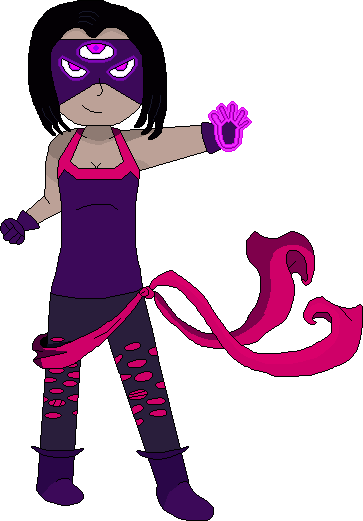
Muse from Sentinel Comics: The Roleplaying Game.
#backset blabbers#sentinels of the multiverse#scrpg#sentinel comics#sentinel comics rpg#sotm#muse sotm#vanessa long#pixel art#backset#backset art
5 notes
·
View notes
Text
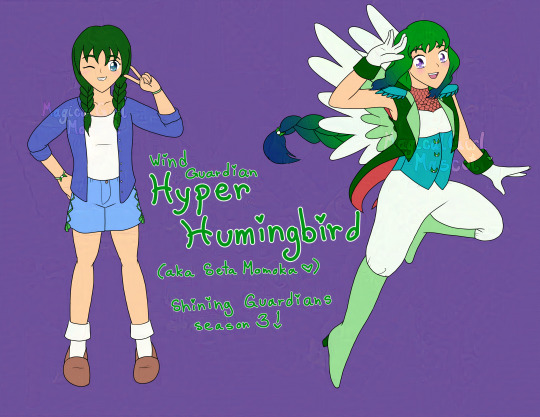
[ID: Digital drawing of two teen girls, one regular and one a magical girl. The regular one, on the left, has dark green hair in braided pigtails, big blue eyes, and a button down shirt and denim shorts. She's winking and giving a peace sign by her face. The magical girl, on the right, has a long green braid with a blue gradient near the end, a green princely tailcoat, white pants, and green and white wings. She's leaping to one side, smiling and waving. In the middle, green text with white outlines says "Wind Guardian Hyper Hummingbird (aka Seta Momoka) Shining Guardians Season 3!" End ID.]
Now that our magical girl SCRPG campaign has hit season 3, I figured it was time for my babygirl Momoka to get a new design! This one I tried to give more of a Takarazuka prince aesthetic, since in season 2 she said that joining Takarazuka Revue as an otokoyaku (actress who plays male roles) was her biggest dream. Fascinated to see how her gay-ass love interests react to the new look lol
(Want a character sheet like this? My commissions are open!)
#I SPELLED HUMMINGBIRD WRONG AND I'M NOT CHANGING IT YOU CAN'T MAKE MEEEEEE#scrpg#magical girl#scrpg character#art#original art#digital art#artists on tumblr#original character
7 notes
·
View notes
Note
Spotify ask game, please number 59!
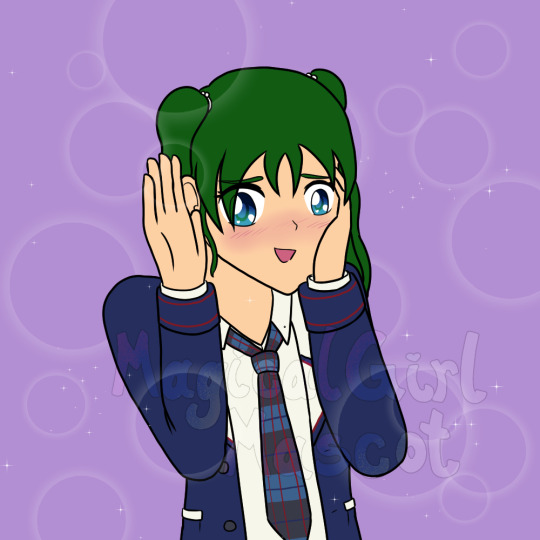
[ID: digital drawing of a Japanese teenage girl with long green hair in pigtails, big blue eyes, and a blue school uniform with a blazer. She's got one hand to her face and is raising the other in a little wave, smiling shyly and blushing. There are white shojo bubbles all around her. End ID.]
Now you might think that I'd associate Bitter Sweet Darling by Smewthie with one of the Tokyo Mew Mew characters because that's what it's from however I did put it on Momoka's playlist and I think about her a lot more than I do the TMM characters. So.
Anyway POV you're Yuki or Saya and you just said hi to Momoka
#my art#art#magical girl#scrpg#momo has just figured out that she's gay btw. like. literally at the end of the last session she realized she likes girls#one of these days she'll realize she has two love interests and explode#believe it or not i did draw this right after getting the ask and then didn't. post it. for two weeks. hiiiii
5 notes
·
View notes
Note
Ask Game // 🎲 // "If your OC played a pen and paper RPG, what class would they pick? Warrior, mage, thief, ranger, cleric, paladin, druid, necromancer, bard (or other, if that’s not enough)."
I've never played a pen and paper rpg but I've always liked the idea of Barbarians. Just running in and hitting things.
(OOC: For my preferred game, Sentinel Comics: The Roleplaying Game, she'd have either the tragic or struggling backgrounds, the Mystical or Higher Power power sources, and the Physical Powerhouse Archetype. If that didn't make sense to you, go check out Sentinel Comics: The Roleplaying Game. Its very cool and good.)
#pokeblogging#pkmn irl#pokemon irl#irl pkmn#mare responds#sentinels of the multiverse#sentinel comics the roleplaying game#scrpg#sotm
2 notes
·
View notes
Audio
(LTTN podcast)
Brian the Beyonder pays a visit to the heroes of Torch, Kasila has a talk with George, and Epimethia is invited to a party at City Hall.
“Crusade”, “Arcadia”, “Anguish”, “Death of Kings”, "The Cannery" Kevin MacLeod (incompetech.com) Licensed under Creative Commons: By Attribution 4.0 License http://creativecommons.org/licenses/by/4.0
#LTTN podcast#Podcast#Listen to these Nerds#Heroes of Pacific City#Tabletop RPG#actual play#scrpg#LTTNcast
0 notes
Text
Not Equal At All
Not Equal At All
Game Design Essay
Introduction
Many game systems offer a variety of choices or options during character creation; the general thinking among these options is that they are, in theory, “equal” to one another. In other words, while there may be specific reasons to pick one or another for certain purposes, they can all be chosen without fear of one choice being clearly superior to the others, or at least close enough to not hinder gameplay and player enjoyment. But this isn’t always the case, and in some games where very coarse-grained choices are part of the process, a wrong choice can have a heavy impact on character capabilities. Let’s look over some examples.
(For the purposes of this essay, I’m NOT looking at comparative resource costs to get the same result, which is the bane of certain more-complex character creation systems, but instead circumstances where players may have a handful of choices to make. The topics are similar, however.)
Broadness of Application
One area that this will often matter is broadness of application; if a character has a trait that can only be used in limited circumstances, they may feel very limited in play compared to a character with traits that can be used in a variety of ways. Extremely freeform traits, such as Aspects in FATE, are susceptible to this problem. (The FATE rulebook does provide guidelines, but it can still take experience to see the difference in application between Can Make Machines Purr and “Okay, I’m going for it!” One is good for technological challenges, but the other could be used for almost anything.)
But sometimes, these issues with broad application are actually built into the system. One example of this is the Sentinel Comics RPG. PCs built in this game have two Principles in their Abilities list; without getting into game mechanics and probability too heavily, these are actually a very important resource for characters, because they allow characters to use the Overcome action with a dramatically improved success rate. (The odds of complete success jump from extremely roughly 2% to 43%; PCs should rely on them a lot!) Principles are selected off a list (and the full range of choices is sharply curtailed depending on character type), and everybody will always have precisely and only two of them, so they should, in theory, always be comparable.
But they aren’t. An Overcome in SCRPG is, roughly speaking, beating a challenge that is not an opponent, whether it’s persuading an official, solving a puzzle, rescuing a drowning victim, or infiltrating a warehouse. The Principles, among other things, have a triggering circumstance in which they can be used. For example, the Principle of Lab says “Overcome while in a familiar workspace or when you have ample research time.” That’s good when those very specific things are involved, but it becomes a very hard stretch to rescue a drowning victim or shift a boulder out of your way. For contrast, the Principle of the Tactician says “Overcome when you can flashback to how you prepared for this exact situation.” For that one, it becomes almost impossible for the GM to deny its use, and fairly simple for a player to justify it. Shift a boulder? Studied leverage just in case. Drowning victim? Took lifeguarding classes to know what to do, anticipating trouble. Persuade an official? Did research on the profiles of all of them. One is much more broadly useful than the other, period. A player who plans ahead and picks at least one Principle that they can use in a wide range of situations will have a distinct advantage, but a random choice might find a character who is great at knowing locals and their own business and at situations where being small and young is an advantage and nothing more.
(And yes, very creative and/or persuasive players may be able to somehow stretch and distort their Principle to fit anything, but there’s a point where it just goes outside rational use.)
Scenario Specific
During a scenario at a gaming convention I attended last year, one of the pregen PCs had their one-and-only special trait be a bonus at piloting extraterrestrial spacecraft. In the course of the scenario, our characters wound up on a spacecraft that we couldn’t control or pilot in any way, arriving at another spacecraft that we then took over-- and that wrapped the game. That player never had a chance to use their specialty; it was irrelevant to the game. Now, that’s not good design, since it was a convention game with pregen PCs, but it showcases another kind of problem with unequal choices-- scenarios where some of the options for characters don’t matter. A classic one is a character built for social encounters who finds the group frequently in deadly combat, but there are countless other examples that are possible. (At the same convention, I wound up with a character whose major resources were related to hacking and communications, which was fine, but the only conflict involved very dangerous enemies attacking us while we were on a highway in the middle of nowhere, and it was set in the 80s, so there wasn’t much I could do with that.) This is at least easier to solve if the GM is involved with the characters during the creation process, and can guide them into roles relevant to the scenario, but if that doesn’t happen, it’s all too easy for a character whose focus is not relevant for the game to simply be unable to participate in the way they wanted to, and that feels like a serious loss.
Combat and Noncombat
One key area where this matters in games is, of course, combat; woe betide the player whose character lags behind others in this arena, it is known, lest they simply die! And that’s certainly a concern-- many RPGs involve a lot of combat, combat almost always involves the entire group, often takes up a lot of table time, and inability to participate meaningfully can get somebody killed.
But that’s actually not the only consideration here. Being combat-capable is so ingrained into game design and character design that it’s almost not the largest concern compared to noncombat application in a number of game systems.
One of the classic examples of this is the most popular game in the US and probably worldwide-- Dungeons and Dragons, notably the current edition. In D&D, one class is “Fighter”; Fighters… fight. They are good in specific aspects of combat; otherwise, they have skills. But everyone gets skills; likewise, everyone can participate in combat, often challenging Fighters in their specific area of greatest strength (Single-target combat), and utterly triumphing over them in other aspects of combat (Crowd control, for example.) It’s doubtlessly necessary for gameplay-- it wouldn’t do to have other classes be helpless in combat, which is a large part of D&D-- but outside of combat, things change. Fighters can have Skills, as can all classes. But spellcasting classes gain abilities that let them bypass Skill challenges, or let them do things that no Skill could ever accomplish, and this gap grows larger and larger even as the combat abilities of spellcasters grows with it.
But this can also impact other systems! In a relatively freeform system like Cortex, creativity can let a trait like Senses outperform Super Strength. It’s easy enough to justify using Senses in combat-- analyzing a foe’s movement, spotting their weaknesses and strengths, and so on. But Senses can also be used to solve puzzles, track enemies, potentially even have application in social settings. Likewise, in some games, it’s very possible to even use social or psychological skills in combat, perhaps by creating “Good morale” assets for other to use. However, conversely, it’s often much, much harder to apply combat skills to noncombat situations as broadly. Being a master archer is much harder to apply to debate than it is to find a justification for a master of persuasion being able to distract a foe or boost an ally. In this regard, it’s a serious issue if combat-themed characters can’t do anything out of combat, but the reverse isn’t true, and it’s something that needs to be considered, either in game design or in campaign design.
Does it even matter?
Does it actually matter if characters are unequal? This is a delicate question, and depends in part on the group and the specific players. If the differences aren’t great, of course, it surely matters less no matter what. But sometimes it’s easy to see where one character has noteworthy advantages over the other… and I think that it does matter, broadly, and it’s worth addressing. Some players, for example, can become frustrated with their inability to contribute, or to act effectively, and that frustration isn’t fun, the more so when it’s not obvious that some choices aren’t as good. Likewise, even if one player doesn’t mind being less capable, other players may become frustrated with that player’s weakness and having to cover for them; the GM, in turn, may find it more challenging to balance encounters and challenges while still allowing that player spotlight time. Overall, the less inequality between equivalent choices, the more desirable the results will be, even if it’s fine with certain players.
Solutions
When making characters, of course, one should look at options and choose carefully, but that’s not always very satisfactory. What if one’s character concept depends on certain choices, or if it’s not obvious that there’s a problem? Another good place to work on this problem is at the design phase of a game, of course, but that’s not an option the majority of the time; most of us play games other people have already made. (I’m a game designer, but for a variety of reasons, mostly play other people’s systems.)
Sadly, this means that a certain amount of work on the part of the GM becomes necessary; it is, however, worthwhile. It’s good to see what choices players make, and then play to them. Is the player immune to something? Make sure it shows up so that they can have their moment! Do they have a Principle that’s great at stealth? Give them lots of chances to sneak in places! Make sure to give players a chance to shine by adjusting scenarios to their characters, rather than making the players adjust to the scenario. Sometimes, it’s the only solution, but I think that it’s the best one.
7 notes
·
View notes
Text
This is one of the things I like about the Sentinel Comics RPG: while there isn’t “advancement” per se, the mechanical rewards for a character are commonly rewarded for engaging in Overcoming a challenge in a way aligning with your character’s Principles. This ends up as a short-term bonus between Issues, and incentivizes players to rp why their character would solve a problem in a particular way to help foster their Principles.
I see we're talking about XP!
@thydungeongal and @imsobadatnicknames2 have interesting posts up, and now it's my turn to throw my thoughts out there. SO. I think of XP as the game itself offering you a little bribe. Do the things the game wantss you to be doing, and the game gives you an XP to say thank you. Get enough XP, and you're reward is greater a permanent bump in power, meaning greater ability to exert your will over the world and therefore greater agency. (Systems like Fate Points, Willpower, Inspiration etc work the same, except the increased agency is a temporary one-time thing, not permanent, so at times I'll lump them in).
So. Let's talk about a few different systems and how they handle this.
Let's start at the very begining (a very good place to begin). In the very early editions of D&D - back when Elf was a class - you got XP for treasure. Every gold coin you got out of a dungeon (or equivallent value of other treasure) was 1 XP. This worked well; the game wanted you to go into a dungeon and explore it for treasure, while trying not to die. If you succeeded, you got XP, which made you better at doing that so you could do it again in a more dangerous dungeon. And because treasure is XP, and treasure weighs you down, getting it out is a meaningful activity. Hell, many of these games measure weight and encumbrance on a scale of 'how many coins' to drive this home. It was a good loop. Early D&D has many faults (like the weird racism in the MM) but the xp system is something it absolutely nailed.
Next up, let's look at classic vampire the masquerade. At the end of each session, you get 1 xp just for being there, and then another if your character learned something, if you portrayed your character well, and if your character was 'heroic'. So, what's classic VtM rewarding? Ultimately, it rewards the player for being the kind of player the game wants. If you get into character, engage with the game world, and act like an interesting protagonist, you get rewarded for it. It's a bit fuzzy, and at the GM's discretion, but its very up-front with what it wants to incentivise. It was the 90s, they were still working out how to be a narrative-driven game, but you can see where they were going with it.
OK, now lets look at something a bit weirder; monsterhearts. The main source of XP here will be Moves. Rather than a bolted-on rewards mechanic, each game mechanic you engage with might grant you xp. You can use your strings on another PC to bribe them with XP when you want them to do something. Lots of abilities just give you an XP for doing a thing, such as a Ghost ability that gives you XP for spying on somebody, or aa Fae ability that gives other players XP when they promise you things. Here, XP is baked into the game, but its very up front about being a bribe. Act the way the game wants, or go along with other players' machinations, and you get rewarded for it. And, critically, XP is just one part of a wider game-economy of incentives and metacurrencies; it links in with strings and harm and +1forward in interesting and intricate ways that push the game forward. Monsterhearts is a well designed game, and you should study it.
Finally, let's look at how D&D 5e does it, as a What Not To Do! We have two different options. The first is XP for combat. When you use violence to defeat something, you get XP for it. Under this option, the only way to mechanically improve your character is by killing things. So, we can conclude that D&D is a game that wants you to engage in constant violence. The other option is 'milestone XP'. IE: you level up at the GM's whim, when they feel like it. What does this reward? Fucking nothing. Or, at best, you're rewarded for following the railroad and reaching pre-planned plot moments in a pre-scripted story. You either have no agency in the matter, or are rewarded for subsuming your agency to the will of the GM. (This pattern continues with inspiration rewards, which are given 'when the GM is entertained by you'. Fucking dire.) "Oh!" the 5e fandom says "But a good GM can write a list of achievements that will trigger milestone XP". And yes, they can, but that's not how the text of the game presents it. That's a house rule. That's the GM doing game design to add a new, better, mechanic to the game to fix its failings. Is it any wonder, then, that the 5e fandom puts so mucn weight on the GM's shoulders, and has such a weird semi-antagonistic relationship between GM and player? Is it any wonder that absolutely brutal railroading (and the resulting backlash of disruptive play) is so rife over there? Look at how the incentive structures are built? It's either killing forever or GM-as-god-king! Anyway, yeah. Consider what you reward with XP, because that will become what your game wants. And if you're hacking a game, one of the most efficient hacks is to change what you get XP for and suddenly the game will pivot to something very different.
701 notes
·
View notes
Text
RPG By Ask
Hello Folks! This is a Sideblog for TirelessDynamo where I do various Play by Ask RPG's (RPG's I'm either running or playing in where they are played entirely in blog asks. usually solo/1 on 1 campaigns) Many of these Campaigns (including the only current active campaign on this blog) will include adult and sexual elements, so this blog is 18+. If you are a minor, please leave and come back in a few years. Types of Posts: Asks: The bulk of the Posts here, where the actual game play happens. Since this is a side-blog, these will be reblogs since Tumblr won't let me send asks from my sideblogs.(tags: Play by Ask, TTRPG, Campaign Specific) Master Posts: Posts listing characters, organizations, and Plot Items from various campaigns in one place for reference. (Tags: Master Post, Campaign Specific) Current Campaigns: Lucy Weaver: Magical Woman (tags: Lucy Weaver: Magical Woman, Play by Ask, SCRPG, TTRPG. System: Sentinel Comics The Roleplaying Game) Lucy Weaver, a once magical girl, now jaded magical woman, trains the next generation of heroes while dealing with the moral complexities of a company that creates Magical Girls to defend the world, and the dangers of enemies old and new returning to haunt her.
1 note
·
View note
Text

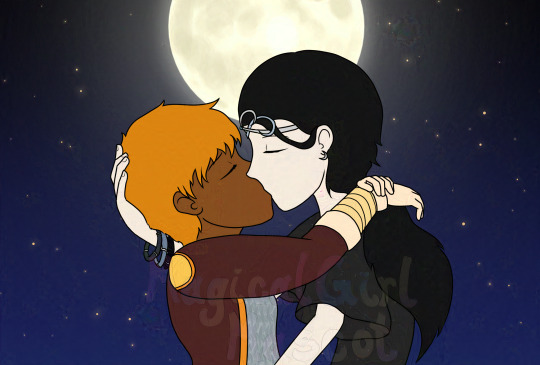
[ID: 2 digital drawings of girls kissing. The first has two teenagers, one a green magical girl with pigtails, wings, and a green and light blue outfit and the other a regular girl with long black hair and a blue school uniform jacket. The magical girl has her back slightly to the viewer and is cupping the other girl's face, the other girl holding the back of the magical girl's head. The background is pink with white lilies and there are shojo bubbles around them. The second has two young women, one with short yellow hair and a red jacket over silver-blue chain mail and one with long black hair and a flowing black short-sleeved dress. The blonde is slightly shorter and has her arms wrapped loosely around the other girl's neck, while the black-haired girl has one hand reaching down to the other girl's waist and is holding the back of her head gently. The background is a dark starry sky with a full moon directly above them. End ID.]
Been practicing drawing kissing recently with my TTRPG characters Momoka/Hyper Hummingbird (the green girl in the left image) and Sister Katherine (the blonde girl in the right image) with their respective NPC love interests. I think I'm starting to get better at it? The second one shows improvement over the first one, anyway.
[Commissions open!]
#art#original art#digital art#ttrpg#ttrpg character#pathfinder#pathfinder character#scrpg#scrpg character#magical girl#momoka actually has two love interests but i like this one best sorry yuki. momo/saya forever actually#sister katherine meanwhile is having a crisis over having a crush on a literal god. yknow. just girly things tm
4 notes
·
View notes
Text
The best part of SCRPG games is coming up with the meta reactions to the comic you're playing out. Like, for example, which of these characters is a Tumblr Sexyman and who has the most fanfiction written about them.
2 notes
·
View notes
Audio
(LTTN podcast)
Following the rescue of the Smith family, the heroes of Torch regroup at the hideout and discuss the disturbing implications of Ilok’s abilities.
“Satiate Strings”, “Hitman”, “Crusade”, “Unnatural Situation”, “Anguish”, “Easy Lemon”, “Tempting Secrets”, "The Cannery" Kevin MacLeod (incompetech.com) Licensed under Creative Commons: By Attribution 4.0 License http://creativecommons.org/licenses/by/4.0
#LTTN podcast#Podcast#Listen to these Nerds#Heroes of Pacific City#Tabletop RPG#actual play#scrpg#lttncast
0 notes
Text
(It’s here!)
(The Sentinels Comics RPG character creation and gameplay chapters are out. When I have time today, I’m going to run through character creation and see if I can make my OCs, Kamen Rider Banshee and Cure Tiramisu.)
2 notes
·
View notes
Photo

Watch Christopher plan out the next treacherous villains that The Vistors will take on tomorrow morning at 11 A.M. CST on Twitch! Click the link below to follow us on Twitch and get notified when we go live! http://bit.ly/2oVGeYV
4 notes
·
View notes
Note
Huge miss not including Sentinel Comics: The Role Playing Game. One of the best superhero RPGs there is, IMO possibly the best. It does a great job of capturing the feel of comics, especially silver age style stuff, and the mechanics do a great job of making even "weak" characters just as valuable to the story (and combat) as even your Superman-level heroes. Highly recommend.
Only reason i havent played it yet myself is due to lacking a group and the group i formed for me to run a game having fallen apart before it could start.
do you have any recommendations for games with interesting superpower mechanics? bonus points for a clear love of superhero comics as a genre
THEME: Superpowers
Oh gosh do I have some recommendations for you. I have likely spoken about pretty much all of these games before, but I feel very strongly about them and I can’t help myself from talking about them again!

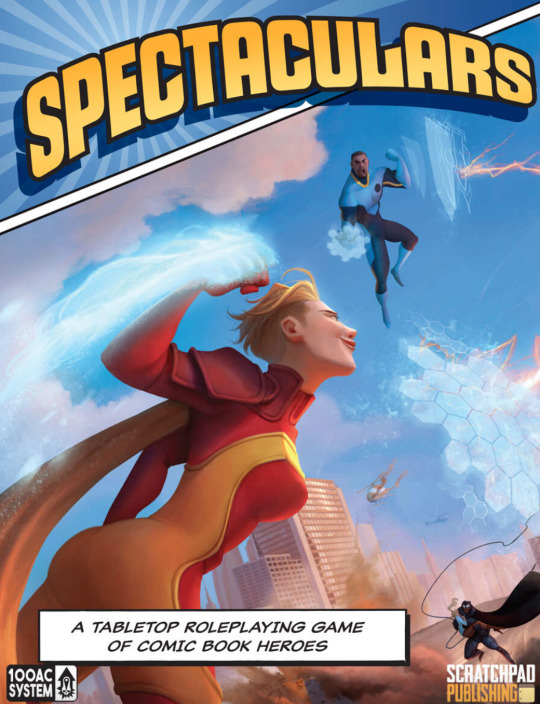
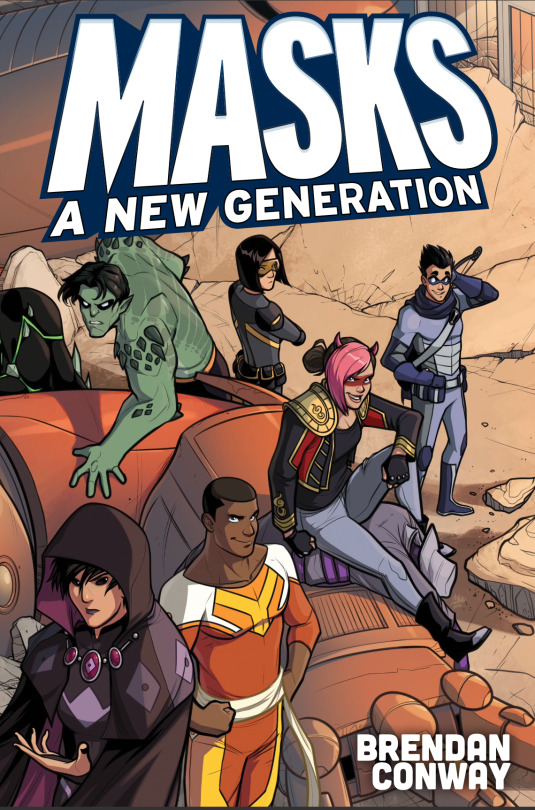
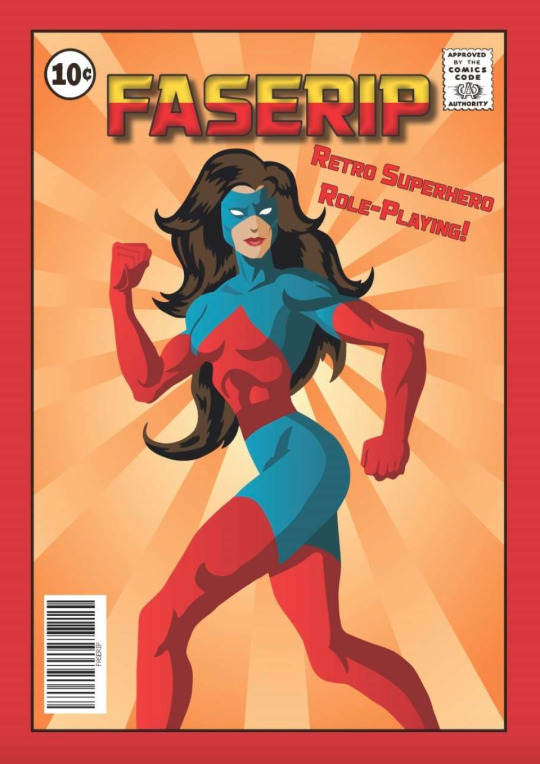
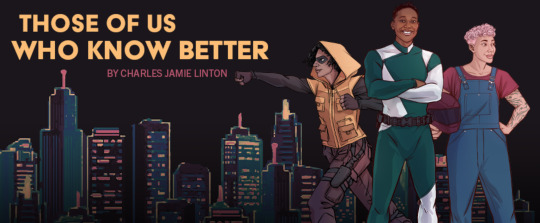
Exceptionals, by Bramble Wolf Games.
Exceptionals is a game inspired by X-Men about and for the spaces and communities marginalized peoples make for themselves. Play as a Geno, one of little less than 0.5% percent of the population that has gone through a mysterious process called Claremont-Simonson mutation, as you try to navigate a world that won’t make room for you. Exceptionals is a game about what the mutant metaphor means to you and the different lenses through which we view it. Punch back and build something of worth together in this narrative tag-driven tabletop role playing game.
What Exceptionals does differently than the other games mentioned here is that it ties all of your character abilities to descriptive words or phrases. You’re not just heavily armoured, you have bone spikes and you’re exceptionally good at resisting extreme temperatures. Your powers can just as easily be things that slow you down and get in your way as they can be handy weapons or powerful resources. Not only that, but your character is also defined by their role in the community. Are you excellent at socializing and often called on to provide a distraction? Or are you good at noticing details, and therefore asked to investigate local mysteries? Each answer gives you a tag you can use to improve your chances of success.
If you have some experience with Fate, you might find Exceptionals to feel pretty familiar, with the biggest difference being in the dice used. The system itself uses 2d10, with modifiers applied through tags, the environment around you, and social bonds. Your bonds are crucial to improving your chances, and that is why Exceptionals champions community. If you want a game that cares deeply about the media it’s drawing from, then I recommend Exceptionals.
Spectaculars, by Scratchpad Publishing.
Spectaculars is a tabletop roleplaying game where players create their own comic book universe, craft heroes and villains to populate that universe, and then play through full-length campaigns to tell incredible stories of heroism and villainy in a world of their own creation.
Spectaculars has different decks of superpowers depending on the kind of genre you’d like to play in, but you can also mix and match if you’d like. Your superpower options are dealt to you randomly, with five basic superpowers always available if you don’t like the options you’ve been given. You get five unique cards, out of which you can choose up to three. I really like this because it prevents analysis paralysis, while still giving you a good number of unique options!
Your superpower ability is usually tied to a percentile - 80 being your best power, 70 being the second best, and 60 being the tertiary (should you choose to take all three). Rolling under that number means you succeed, and you can also roll advantage or disadvantage dice to determine extra details - like whether your move sets up another superhero really well. Each superpower could have up to two different effects, using situational limitations or time tokens to debuff anything that is extraordinarily powerful.
So for example, the Corrosion power gives you the ability to reroll any advantage dice you roll once, as long as you are trying to corrode non-living matter. However for Light Manipulation, you can make whatever light effect you evoke last for longer if you put two time tokens on your card, and you can allow yourself to use your power and do something else at the end of the round by adding four time tokens to the card. At the beginning of your turn every round, you get to remove a time token. This is a great game for folks who love tactile play, as the tokens, dice and power cards give you a lot to handle.
If you want a more in-depth review of Spectaculars, you can check out this summary by Deeper in the Game.
MASKS, by Brendan Conway, at Magpie Games.
Halcyon City has had more than its fair share of superheroes, superteams, supervillains, and everything in between.
Your team of young supers must forge your own path amidst the pressures of a world full of people telling you what to do and who to be, and kick some butt along the way!
Masks: A New Generation is a superhero tabletop roleplaying game full of action, youthful angst, and dazzling bravery. Take on the roles of members of the latest generation of superheroes, young adults trying to figure out who they are and what kind of heroes they want to be.
I am remiss if I don’t talk about MASKS, the first game I would turn to if I wanted to replicate Young Justice, Teen Titans, or anything from the Spiderverse series. This game is often cited as one of the definitive examples of what a Powered by the Apocalypse game can do, and for good reason. The superhero powers are present as picklists tied to each playbook, while what separates the playbooks is the inherent struggle of the character. Are they trying to hide their mundane identity? Are they struggling with feeling like a freak? Do they have a legacy to live up to?
I think these thematic elements show a deep love for the superhero genre, and I also love that the chances of success aren’t tied to what your abilities are, but rather your reasons for using them. If you are trying to protect someone, you’re rolling Savior, but if you’re trying to do damage, you roll Danger. In either situation you could be using your powers, but it’s intent that matters - and then you describe how you want to do it in order to give us an idea of what success or failure would look like.
FASERIP, by Gurbintroll Games.
FASERIP is a neo-clone game of super heroes, based on a classic 1980s role-playing game. The game contains a flexible yet streamlined super power system, and a completely new character generation system which keeps the fun and unpredictability of the original game’s random character generation but tempers it with an emphasis on balance and player choice.
This is a retro-clone from another superhero game that has since gone out of print - I think perhaps Marvel Super Heroes? Unfortunately I’m not familiar with the source material, but I can tell you that this version is free!
FASERIP is pretty granular in your ability level, ranking characters and difficulty levels from Zero to Infinite. Your superpowers in this game have a few important factors - source (how you got the power), rank (how effective it is), and boosts (how flexible your abilities are. Powers are determined randomly in FASERIP, with roll tables used to determine what kinds of powers you get and how many boosts you get. If you’re a fan of older rules systems and random power generation, I recommend checking out FASERIP.
Those of Us Who Know Better, by C.J. Linton.
Those of Us Who Know Better is a tabletop roleplaying game about transgender superheroes whose powers come at a price. Civilians by day, in community every other Thursday evening, and heroes by night, the players use their powers to problem solve and offer protection and support around town. These powers must be used sparingly, however, because every use of a superpower demands a specific and costly remuneration.
For some reason or other, your characters are under a contract that gives them powers. How that contract came to be and how it functions is up to you, but the result is this: every time you activate your superpower, you must pay a price. If you do not pay this price, your character is immediately subjected to intense physical pain.
The book has a short list of some common superpowers, such as flight, fire manipulation, and super senses. It also has a short list of consequences - with options such as get an animal to bite you, run for five minutes, and take a shot of alcohol. The book has some basic guidelines for what to consider when creating your own powers and prices, so I think the world is your oyster with a game like this.
112 notes
·
View notes
Text
Gisa: Cael I need a chicken
Cael: Why do you need a chicken for surgery?
Gisa: I will shove your head so far up your-
Cael: No no I’ll get it
1 note
·
View note